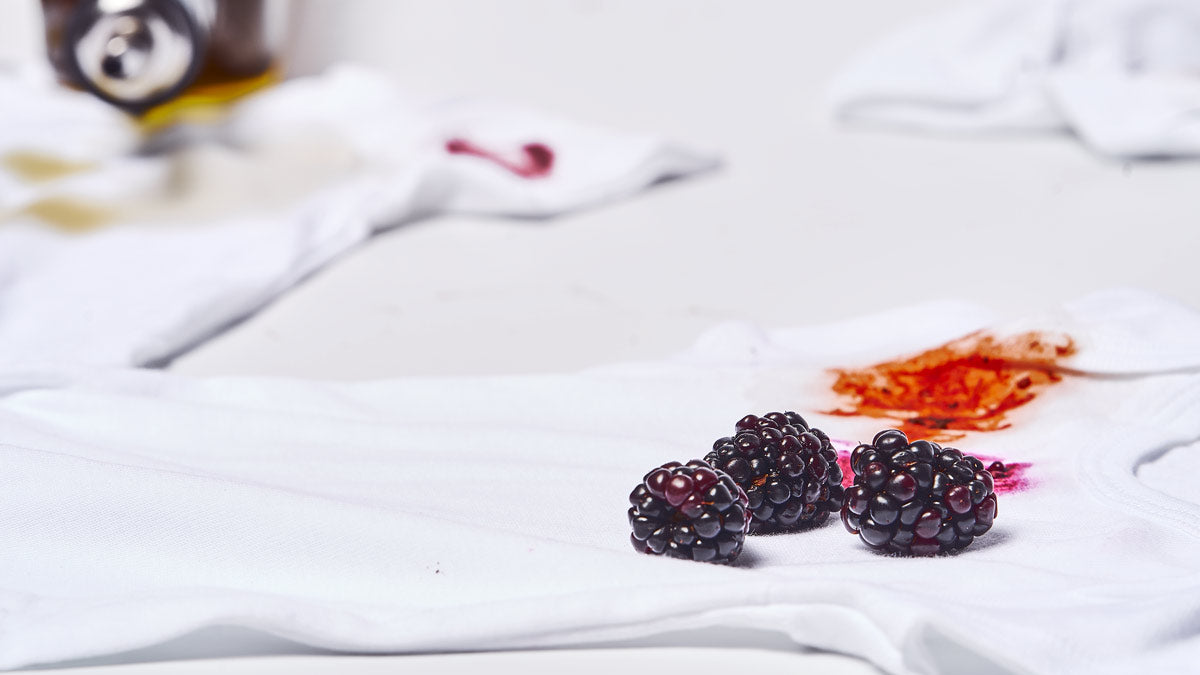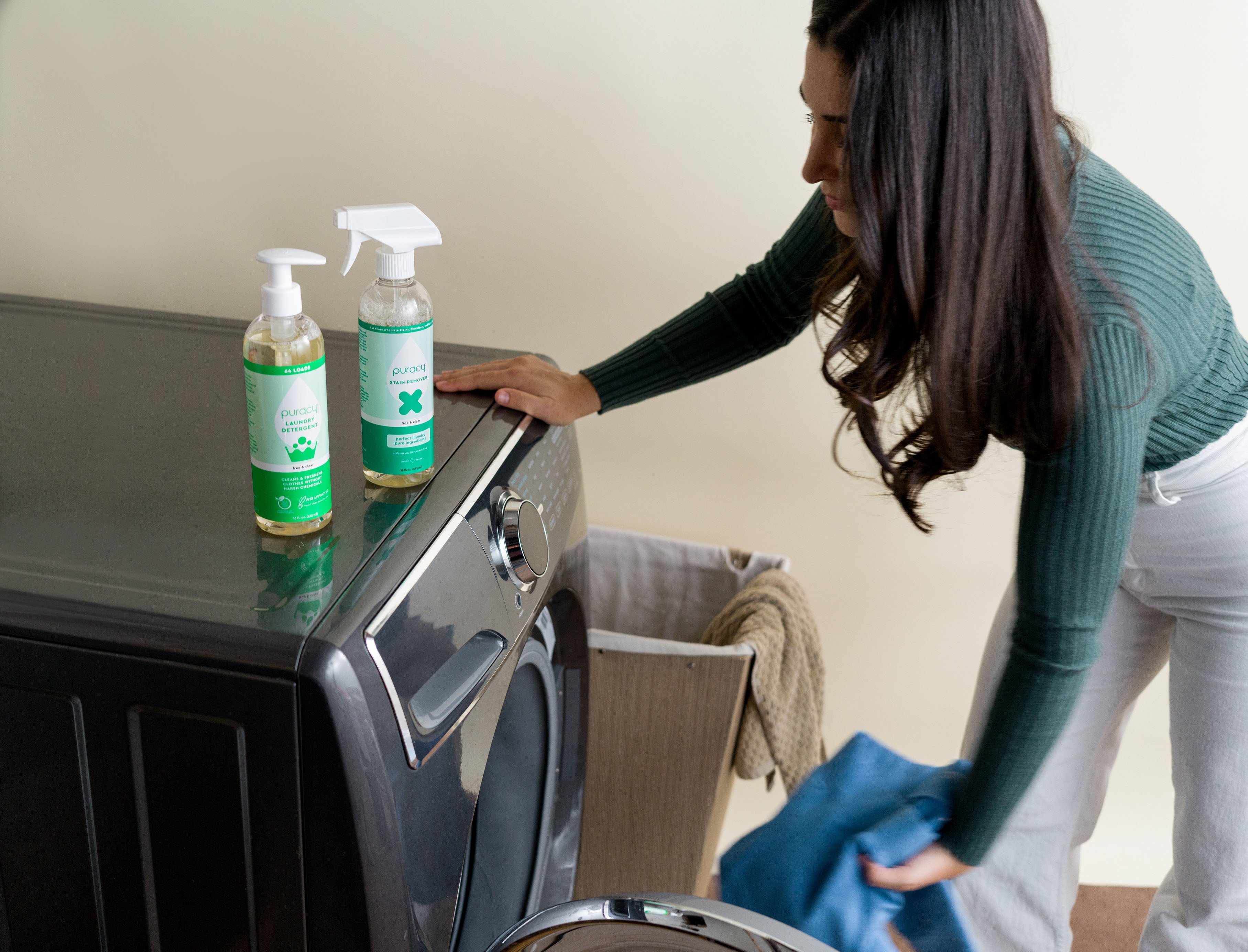
What Are Enzymatic / Enzyme Cleaners?
They're in tons of cleaning products and laundry detergents, but what is an enzyme cleaner? And why have these plant-based ingredients become so popular recently?
From erasing smudges to eliminating odors, discover why an enzyme cleaner is a must-have in everyone's home.
Enzymatic Cleaners

An enzymatic / enzyme cleaner is a cleaner that uses plant enzymes to clean a variety of stains and messes.
This type of cleaner is a catalyst that uses non-pathogenic bacteria to break down and digest organic waste, stains, odors, and mold. Different plant enzymes provide different natural chemical reactions. For instance: amylase splits carbohydrates into simple sugars while lipase breaks fats and oils down into fatty acids.
Detergents can be enzyme cleaners, as they often contain enzymes such as lipase and protease to break down stains and odors. However, vinegar and bleach (or Clorox) is not considered an enzyme cleaner since it is acidic and works by dissolving waste that is then washed away.
How Do Enzyme Cleaners Work?

When you use an enzyme based cleaner, it gets in between cracks, crevices, and fibers to break down stains (and subsequent odors) until the particles are totally eradicated. And the best enzyme solutions do it without the harsh detergents and caustic chemicals.
How Do Puracy Enzyme Cleaners Work?

Check your product's ingredient label: Just because it's an enzyme cleaner doesn't mean it can remove every stain and odor! We recommend our 99.51% Natural Stain Remover because it utilizes all six plant-based enzymes. That means our enzyme solution combats just about every smudge, speck, and blemish in its path. Our closest competitor only uses four. Plus it’s safe on septic tanks!
Effective on all water-safe fabrics, our Natural Stain Remover is:
- Powered by 6 different plant enzymes that directly target each stain
- Won’t cause bleaching
- Won’t cause color fading
- Won’t harm fabrics, including rugs, sofa, or bedding
- Doesn’t require extra rinsing
Where Can You Use Enzyme Cleaners?

Basically, if the fabric can get wet, these products will help clean and refresh it.
-
Pet Stains
We know how frustrating pet accidents can be. That's why our Natural Pet Stain & Odor Remover totally eradicates smells from deep within fabric and carpets. We mean it: This dirt, hairball, vomit, and cat urine enzyme cleaner really works at removing pet stains!
-
Carpet Stains
We believe that home surfaces should be free of caustic chemicals and fumes – and that’s especially true for surfaces your family plays, snuggles, and naps on. To totally eradicate smudges and smells, check out our straightforward guide on using an enzyme carpet cleaner.
-
Laundry Stains
Enzyme cleaners are ideal for a presoak when it comes to tough stains on clothes or other fabrics. Presoaking or pretreating clothes with an enzyme-powered stain remover breaks down protein stains, making them easier to remove once you throw these fabrics into the wash.
-
Baby Stains
From poop and vomit to spit up and baby food, baby stains make their own category of messes and stains that require a strong enzyme cleaner. Our Natural Baby Stain Remover safely tackles each blemish and is completely effective on bibs, bedding, blankets, burp cloths, stuffed animals, swaddles, and more.
How Do You Use an Enzymatic Cleaner?

Follow these steps for using enzyme-powered cleaners on different stains and surfaces.
For Clothes & Washable Fabrics

From removing pit stains to red wine on a tablecloth, these simple steps should take care of the issue:
- Spray & Wait
Fully saturate the affected area with Puracy Stain Remover. We recommend waiting at least 15 minutes before laundering, but your enzyme laundry spray will work better if you wait at least 8 hours.
- Scrub
Use a boar hair detailing brush or old toothbrush to gently scrub the treated area (you can even agitate the fabric by rubbing it together). We prefer boar’s hair for delicate fabrics like silk.
- Launder
Add the item(s) to your washing machine and run a load according to the fabric care instructions. From sweat to chocolate to coffee, the four plant-based enzymes in Puracy Natural Laundry Detergent fully disintegrate any remaining elements that might be wedged in fabric fibers. And our clean-rinse formula means they're totally removed.
- Repeat (if Necessary)
A word of caution: Drying cycles can actually "bake" the stain into fabric. Until you’re sure that the stain is completely gone, air dry the item(s) in question. If you can still see discoloration, repeat steps 1-3.
On Upholstery

Some surfaces (like couches and chairs) obviously can’t be tossed into the washing machine. Try these easy steps to zap stains:
- Spray & Wait
Use Puracy Natural Stain Remover to thoroughly saturate the surface. Wait at least 15 minutes.
- Scrub
For tough stains, work the stain remover into the fabric and let it sit for at least 8 hours. We recommend using a boar’s hair brush or a soft toothbrush.
- Blot, Rinse, Repeat
Fill a bowl with warm water, saturate a clean microfiber cloth, and gently wring it out. Lightly press into the stain, rinsing and wringing your cloth out as often as necessary. Continue until the stain and the stain remover are rinsed from the fabric. Larger stains may need 1-2 clean cloths.
On Carpets

Make quick work of unsightly spots and odors – without toxic chemicals or synthetic fragrances.
- Gently blot the stain
Soak a clean cloth in enzyme cleaning solution and gently blot the affected area. Avoid scrubbing too hard, as that will set the stain deeper into fibers.
- Lift the stain
Use another clean cloth and warm water to "lift" the remaining shampoo and stain particles.
- Repeat
Repeat these steps until the cleaning solution and stain are gone. Use a dry microfiber cloth to soak any remaining moisture.
On Pet Stains and Odors

Tackle the toughest pet accidents and odors with the following steps.
- Blot the stain
Saturate a clean microfiber towel in warm water, and wring it out. Press the towel on the affected area, gently blotting. With each blot, flush fresh water into the affected area while absorbing waste into the towel.
- Repeat as necessary
Wring out the towel into an empty bucket. Take a clean towel and repeat the first step, and keep doing this until all the excess liquid is gone.
Does an Enzyme Cleaner Disinfect Surfaces?

While an enzyme cleaner certainly breaks down organic stains and odors, only cleaning and disinfecting will kill the remaining pathogens. Bacteria, fungi, and certain viruses will need a deep cleaning and disinfection in order to be fully removed.
Can I Make My Own Enzyme Cleaner?

If you want to go the DIY route, you can make an enzyme cleaner using a simple fermentation process.
- Take 2-4 cups of fruit rinds and peels and place them in a large plastic or glass bottle.
- Add 4 cups of filtered water, 1 teaspoon of baker's yeast, and 1/2 a cup of brown sugar.
- Close the bottle and shake it until everything is thoroughly mixed together.
- Place the bottle in a warm, dark area, such as a cabinet or closet. This is where the fermentation process will take place.
- At least once a day, briefly open the bottle to release pressure.
- Let 4 weeks pass, then strain the liquid using a cheesecloth or strainer into a spray bottle. The resulting cleaner can be used for up to 1 month.
We've Created the Best Enzyme Cleaner, Guaranteed
Life gets messy, but that doesn’t mean you need to settle for questionable ingredients or complicated instructions.
We’re so confident in our plant-based enzyme cleaners that if you don’t absolutely love them, we’ll refund your purchase. No questions, no hassles, no returns necessary. That's the Puracy promise!


























